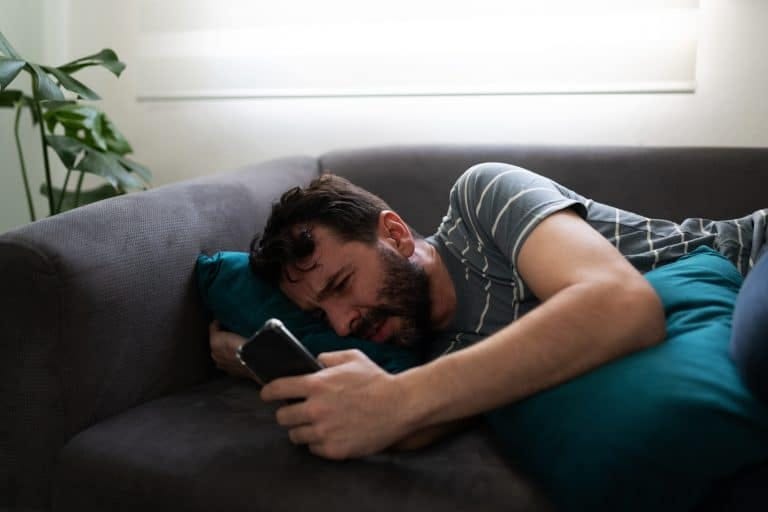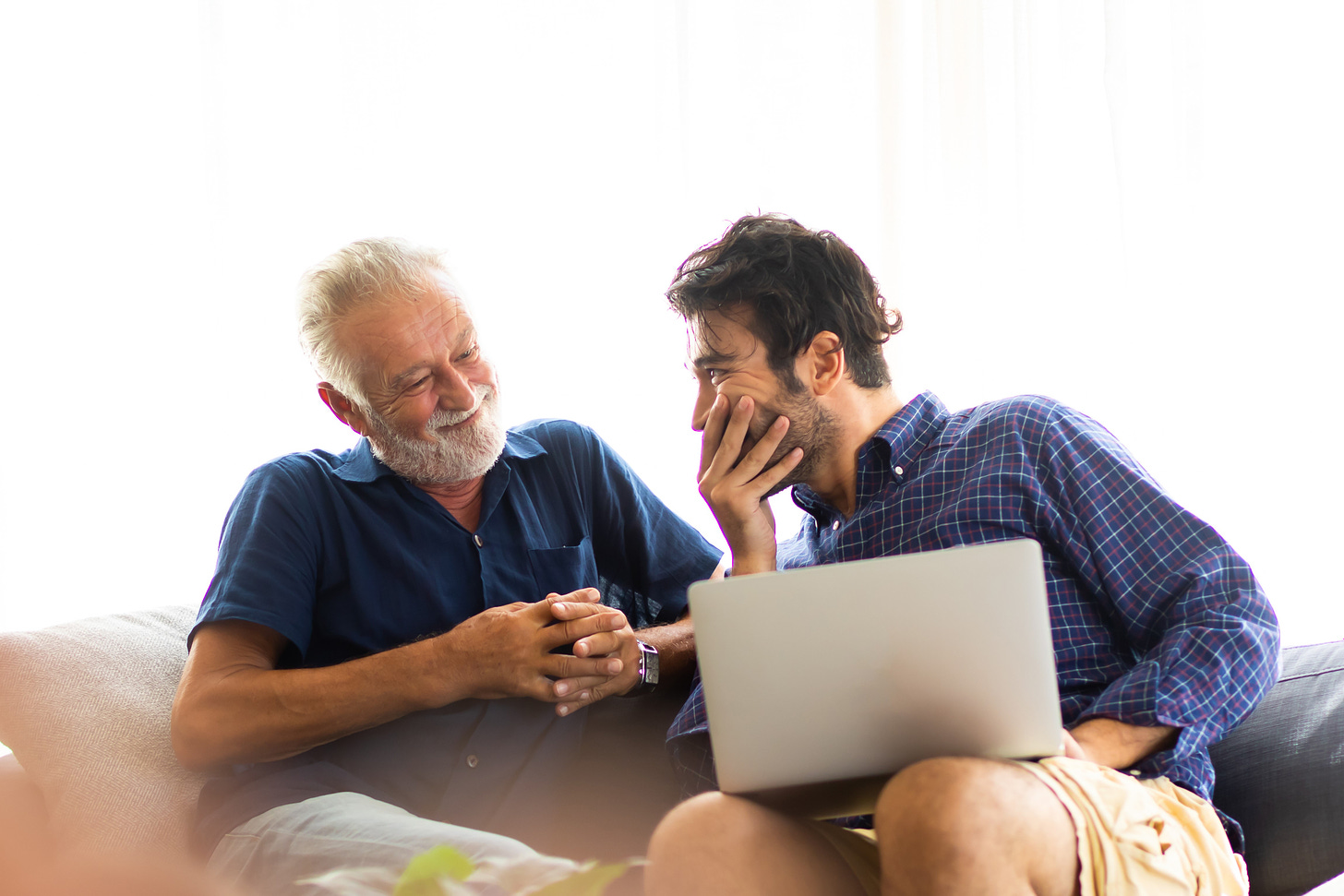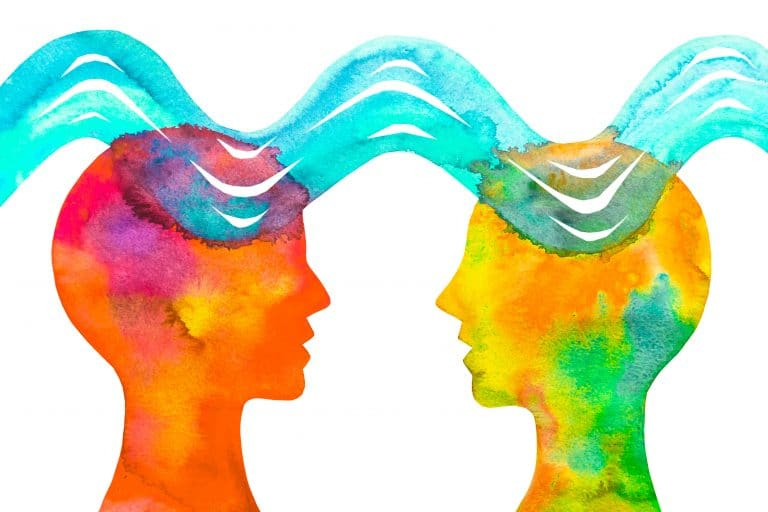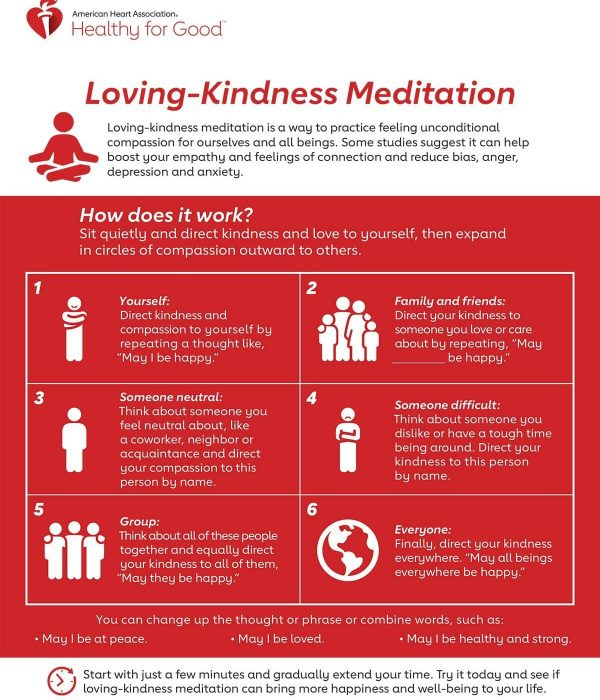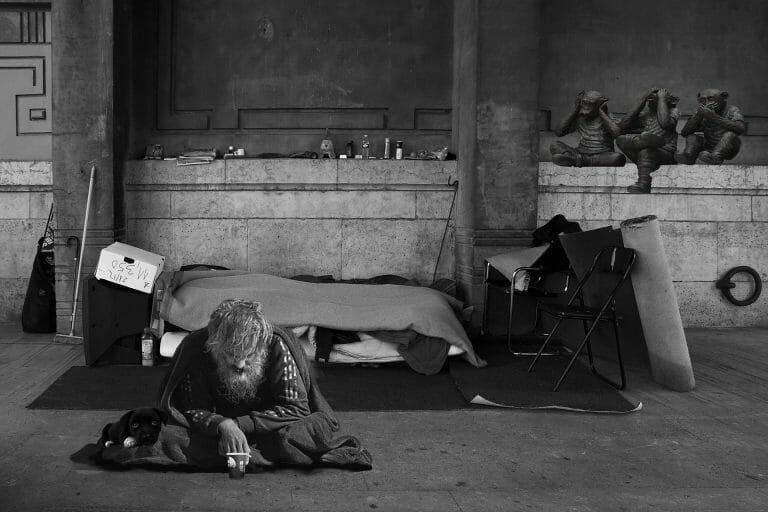How Relationships Help Us Heal—& How Pain Brings Us Closer Together
1. Pain & Personal Relationships
Ever received news that froze the blood in your veins? Revelations so dark they made your stomach knot painfully? There are more than 1600 words in the English language for despair. Happiness, on the other hand, barely manages half that. Pain, suffering, distress; whatever you call these things, they belong to the human condition.
Some of us push others away, we think we can handle it ourselves. But the truth is we’re communal creatures—we were always meant to face our problems together. A smile from a friend can lift us from our gloomiest thoughts. The arms of a lover transmute more pain than Paracetamol. In fact, everything from anxiety to depression is lessened in the company of others—and grief can be a powerful reminder of that fact.
Psychologists, neurologists, and therapists, all contend that, in spite of its unpleasantness, pain offers certain advantages: they pitch suffering as a kind of social multiplier—boosting cooperation and bonding between groups. “When difficult experiences are shared,” writes social psychologist Brock Bastion, “they tighten bonds of friendship, reinforce community sentiment and foster mutual cooperation.”
The 2017 movie Darkest Hour highlights this tendency. It follows British Prime Minister, Winston Churchill, as he rallies the UK ahead of war. The movie demonstrates how the looming threat of German invasion—particularly after the retreat at Dunkirk—galvanises the British fighting spirit. The heightened sense of danger, in other words, cultivates a sense of togetherness, self-sacrifice and community spirit. VE Day (Victory in Europe Day) ultimately arrived some 1,808 days later.
“Pain not only makes us feel closer to others,” Bastion goes onto explain, “but also more willing to risk ourselves for the benefit of the larger group.” Those who deal with higher levels of hardship tend to trust more, are more trustworthy themselves, and are more likely to share equally. Hardship, in his words, helps us become kinder and more compassionate human beings.
This is the dynamic I will be exploring today. Drawing on recent findings, I aim to set out, in a two-part series, how relationships protect us from suffering: how they’re able to diffuse trauma and kick-start the healing process. But I also want to find out how pain—contrary to expectations—behaves as a force for good in relationships: how it bonds people together into cooperative groups and fosters cohesion and identity within those groups.
2. Social Support: The Antidote To Stress
OK, look. Let’s agree on one thing. We humans evolved to function within social groups. Those who have rich social networks lead longer lives and suffer from fewer health problems.
But—and this is the crucial point—it’s not enough to merely be in the presence of others. “For our physiology to calm down, heal, and grow,” writes Bessel van der Kolk in his book, The Body Keeps The Score, “we need to truly be heard and seen by those we care about.”
Let’s pretend, for instance, we have a young man in the city, who’s recently lost his job. Since losing employment, this young man, say Mike, keeps more or less to himself. Walking downtown one afternoon, he passes laughing couples in the streets, squabbling families in the park, screaming kids in the mall; and feels increasingly segregated from all of them.
Like many people nowadays, work had been Mike’s main focus, and when career minded people lose their jobs, they also lose a large part of their social network. Despite the odd Zoom call with school friends, things don’t really feel the same.
In fact, as the weeks pass by, he grows ever more isolated. Gradually, in an effort to numb the pain, he slides into video games and pornography. Maybe even drugs. Some of us have been here before: gloomy thoughts and a gloomier state of mind.
Many might look at Mike’s situation and blame joblessness. They would say not having a purpose—a reason to get up in the morning—is the main source of his problems. But deeper issues are at play: namely loneliness and the lack of meaningful relationships in Mike’s life. The truth is that he’s been neglecting his social life, and it’s costing him.
“We humans recover best in the context of relationships: with families, loved ones, and social groups,” continues van der Kolk. “The role of these relationships is to provide physical and emotional safety, including safety from feeling shamed, admonished, or judged, and to bolster the courage to tolerate, face, and process the reality of what has happened.”
“Fellowship is heaven, and lack of fellowship is hell; fellowship is life, and lack of fellowship is death; and the deeds that ye do upon the earth, it is for fellowship’s sake ye do them.”
—William Morris | The Voice Of John Ball
Why then does modern society label personal strength an individual trait? Why do we elevate concepts like independence and individuality, when on a deeper level we barely exist as individuals? After all, our brains evolved for us to function within social groups. Everything about us—mind and body—is geared around cooperation. Yet more and more we view ourselves as individuals—rather than as members of a wider whole—as consumers, rather than participants.
Sadly, for many of us, social interaction is fast becoming terra incognita. We stay inside to drink beer and watch B-rate movies. We surf Tinder and Instagram in the hopes of maybe a casual hook-up. Technology seems to meet the needs of our human vulnerabilities—but, more often than not, its answers prove illusional. Connection, true connection, isn’t simply the ability to communicate—it requires something else as well.
3. Recovery Within The Social Context
Let’s now pretend that Mike’s situation was different. Say this time around he has family to rely upon, maybe even a girlfriend living close by? Rather than feeling lonely, he retreats to the safety and protection of his family home. While there, his dad helps him hatch plans for a career change, whereas his mum takes care of some home comforts. Surrounded by the voices and faces of the people who care about him, things start to seem better.
Studies conducted in the UK during World War Two found that children who remained in London with their parents during the Blitz fared much better—psychologically speaking—than those sent away to relative safety in the countryside. Despite enduring regular nights in bomb shelters, and frequent scenes of death and destruction, the kids who stayed behind did so in the company of their families. “And when we are terrified,” adds van der Kolk, “nothing calms us down like the reassurance or firm embrace of someone we love.”
After getting back to the city, Mike’s girlfriend pays him a visit. That evening, he opens up to her about his situation, and she appreciates his honesty. Remarkably, the act of sharing his vulnerabilities seems to pull them closer together and, as the night progresses, their connection begins to deepen.
The next morning, he wakes up and—pulling her towards him and feeling her body melt into his—he no longer feels so weighed down by everything. In fact, he feels stronger and closer to her than ever before. Maybe things turned out for the best, after all?
Speaking personally, I believe intimate forms of human connection tend to beget higher forms of self-expression. By giving us the impetus to rebuild careers, revise dreams and create lasting legacies for the future; the social networks we build go a long way towards giving our lives meaning and satisfaction.
Putting it another way, the friendships we have and the lovers we confide in do more than simply comfort us: they shift us out of old mindsets; they push us into new paradigms; they sow the seeds for new meanings and identities to emerge.
Or, as Van der Kolk describes in his book: “We will climb mountains and cross deserts and stay up all night to finish projects, if we feel safely held in the hearts and minds of the people who love us.”
4. How Empathy Fails Us—& How Compassion Can Help
Pain certainly motivates us to seek out social support, but it also works the other way around as well. When we see others in trouble, we often feel an urge to help them: and these good natured tendencies form a central component of the relationships we build.
The truth, then, is that—whether it be physical pain or mental angst—we tend to respond to another’s suffering with our own thoughts and gut level reactions. How we shape those thoughts, how we channel those responses, ultimately feeds back into our own relationships. So then, let’s take a look at the various options we have available.
Brain researchers tell us there are three kinds of empathy. The first is cognitive empathy. It lets us understand how the other person thinks, we see their perspective. The second one, emotional empathy, lets us feel what the other person is feeling, we become sensitive to their pain. Many people would regard the second type—emotional empathy—as fundamental to social cooperation. But while it inspires care and protection within personal circles, its effect on the wider world is somewhat more negative.
For a start, nurses and first responders will tell you that resonating with emotional pain on a daily basis takes a toll on mental health. “We not only activate mechanisms for sharing emotions,” explains Christian Keysers of the Netherlands Institute for Neuroscience in Amsterdam. “We actually activate our own emotions and sensations as if we feel the same thing.”
Emotional burnout, then, is a common factor among care workers. And if what we feel continually upsets us? Our next response is to tune it out, which may help us feel better in the moment, but doesn’t actually solve the problem.
Paul Bloom, psychology professor at Yale University, reflects on this in his book: Against Empathy—The Case for Rational Compassion. “Emotional empathy is a spotlight focusing on certain people in the here and now,” he writes. “This may make us care more about them, but it leaves us insensitive to the long-term consequences of our actions and blinds us to the suffering of those we do not or cannot empathise with.” From a moral standpoint, he argues, we’re better off without it.
“Deserves it! I daresay he does. Many that live deserve death. And some that die deserve life. Can you give it to them? Then do not be too eager to deal out death in judgement. For even the very wise cannot see all ends.”
— J.R.R. Tolkien | The Fellowship of the Ring
Bloom believes that compassion, the third type of empathy, is the real engine behind social support. For a start, MRI scans reveal, rather than triggering empathetic distress, compassion activates neural circuits centred around the prefrontal cortex: in particular those associated with positive feelings, reward, and affiliation—similar to the love a parent feels for a child. From this more positive state of mind, we often feel confident and clear minded enough to proactively confront the problems before us.
Knowing this, Bloom suggests—rather than responding to problems with knee-jerk emotion—we focus instead on strengthening the connectivity between our emotional brains and the prefrontal cortex: that is, the region of the brain that allows us to think through issues, override gut level reactions, and reach more thought-out conclusions.
Loving-kindness meditation—a popular form of compassion training—is one such avenue we have available. Studies show it boosts levels of personal well-being as well as interpersonal cooperation. Following two weeks of lessons, practitioners reported feeling more connected and more positively inclined towards those around them. They also demonstrated a heightened ability to maintain focus when confronted with suffering.
And this tells us something—leaning into compassion, vis-a-vie the prefrontal cortex, helps us become kinder and more effective people in general. It brings forth a mindset that encourages us to respond to other people’s problems with mental clarity and loving kindness—as opposed to knee-jerk emotion. And by doing so, it gives us the opportunity to develop more beneficial and meaningful solutions to the challenges we face—both personal and collective.
A society that rejects compassion is, to varying degrees, exposing itself to moral rot. Take homelessness as an example. Despite males dying at nine times the rate, the majority of welfare services remain geared around women. Charities like Homeless Link frequently single females out for special treatment, while at the same time side-lining issues faced by men.
As with many areas where the male sex is a risk factor, there seems to be little focus on the experience of being male and its relationship to homelessness. This may seem bizarre, but take note of the empathy differential: we as a species tend to resonate more readily with female suffering than with that of men.
And, without compassion to provide perspective, and address the imbalance, this type of knee-jerk bias inevitably finds itself reflected in public policy. It might explain, for example, the spectacular gender gap in medical research: men’s health problems nowadays receive only a quarter of the funding spent on female health. It might also explain why we have entire government departments dedicated to pursuing female welfare, and yet, when it comes to men receiving the same treatment, such considerations are relegated to an afterthought.
So, the next time you see someone in trouble, consider how you respond. Do you channel your neural alarm? Or do you offer assistance from a detached, but perhaps more helpful, state of mind? When you focus on how to deal with the problem, as opposed to resonating with the pain; when you come from a place of composure; as opposed to a place of distress, you become more effective and clearer minded in the process. You forget about your own troubles, and become a source of strength for others.
The difference, in the end, lies in how you interpret the pain—the types of neural circuits you activate in response.
Read Next: Shared Suffering, Stronger Communities
The post How Relationships Help Us Heal—& How Pain Brings Us Closer Together appeared first on Lifestyle Harmonics.






